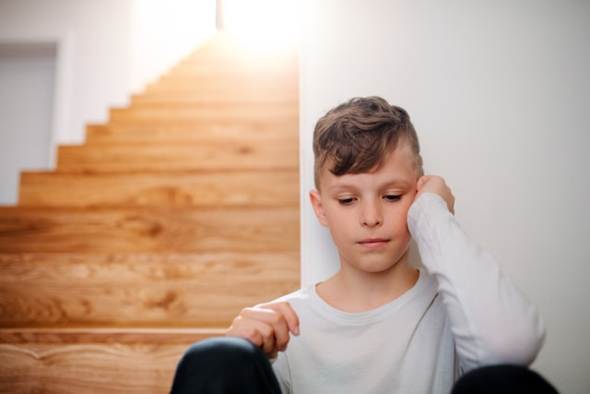
Child welfare is a system designed to provide temporary care for children who are unable to live with their birth parents due to various circumstances that put their safety, well-being, or future at risk. But what is foster care? It is the placement of children in the temporary care of licensed families or institutions when their birth parents or legal guardians are unable or unwilling to provide a safe and stable environment. While the system is designed to protect children from harm, it is not without its challenges, and the potential reasons behind family separation are often complex.
The decision to place a child in temporary care is never taken lightly. It involves the determination that a child’s needs for safety, emotional stability, and physical care are not being met in their current home environment. This article will explore the common reasons behind family separation, detailing the circumstances that lead to children entering the child welfare system.
One of the most common reasons children enter protective care is the presence of abuse or neglect in the home. Child abuse can take many forms, including physical, emotional, sexual, or psychological abuse. Neglect occurs when a caregiver fails to meet a child’s basic needs, such as food, shelter, medical care, or emotional support. Both abuse and neglect can have severe, long-lasting effects on a child’s development, and when these issues are identified, child protective services (CPS) may intervene.
When abuse or neglect is reported, whether through a concerned neighbor, teacher, or healthcare provider, a thorough investigation is typically conducted. If it’s determined that a child is at risk of harm, they may be removed from the home and placed in protective care while the situation is evaluated. In many cases, the child’s parents or guardians will be offered services and support, such as counseling or parenting classes, to address the issues that led to the child’s removal. However, if the problems persist or are severe, the child may remain in the system until it’s deemed safe to return home, or in some instances, parental rights may be terminated.
Substance abuse is another significant factor that leads to children entering family services. Parents struggling with addiction to drugs or alcohol may be unable to properly care for their children due to their impaired judgment, erratic behavior, or lack of consistent caregiving. In cases where substance abuse puts the child’s safety and well-being at risk, child protective services may intervene.
Children of parents with substance abuse issues may experience neglect, physical harm, or emotional trauma. In addition, these children may witness drug or alcohol-related violence, which further increases their vulnerability. In situations like these, children may be removed from the home until their parents can seek treatment, stabilize their lives, and prove that they are capable of safely caring for their children.
While substance abuse is often a major factor in the decision to place children in temporary homes, it is not always permanent. With the right treatment and support, parents struggling with addiction can regain custody of their children and provide them with a safe, nurturing environment. Unfortunately, this is not always the case, and some children may remain in the child welfare system for an extended period.
Mental health problems can also be a contributing factor to family separation. Parents who suffer from severe mental health conditions, such as depression, bipolar disorder, schizophrenia, or anxiety disorders, may struggle to meet the needs of their children. In cases where a parent’s mental health issues interfere with their ability to provide a safe and stable home, child protective services may become involved.
In some situations, mental health challenges may be compounded by other factors, such as financial instability or a lack of social support. When a parent’s mental health issues lead to neglect, emotional abuse, or an unsafe environment, children may be removed from the home and placed in care. Like with substance abuse issues, parents may be given the opportunity to address their mental health concerns with professional help, and if they can regain stability, they may eventually be able to reunite with their children.
Domestic violence, or intimate partner violence, is another serious issue that can lead to children entering the system. When a parent or caregiver is involved in an abusive relationship, the child may witness violence, which can have severe psychological and emotional consequences. Even if the child is not directly abused, exposure to domestic violence can lead to trauma, fear, and long-term emotional distress.
In many cases, child protective services will step in to remove the child from the home to protect them from further harm. A child’s safety and mental health are the top priority, and if domestic violence is present, the child may be placed in protective custody while the situation is addressed. In some cases, the abusive partner may be removed from the home, and the non-abusive parent may be given the chance to work through the situation with counseling or legal action.
However, domestic violence can complicate the family reunification process, especially if the abusive parent is unwilling to change or if the child’s safety cannot be guaranteed. In these cases, children may remain in the system until a safe and stable environment can be created.

When a parent dies or becomes physically or mentally incapable of caring for their children, the family may not have the resources to provide adequate care. Extended family members, such as grandparents, may be able to step in and provide care. However, there are some instances where no suitable relatives can fill this role.
When this happens, child protective services may be involved, and the child may be placed in a temporary home until a permanent guardian or adoptive family can be found. This can be a particularly challenging situation for children, as they are not only facing the grief of losing a parent but may also experience confusion or trauma related to the change in their living situation.
Abandonment occurs when a parent or caregiver voluntarily leaves their child without providing any form of care, supervision, or support. This can include leaving a child in an unsafe or neglectful situation or simply abandoning them without any means of contact. Parental abandonment can be emotionally devastating for a child, as it often leads to feelings of rejection and confusion.
When abandonment is reported, child protective services will investigate the situation. If the parent is determined to have intentionally abandoned the child, the court may begin the process of terminating the parent’s rights and seeking adoption or permanent guardianship.
While financial difficulties alone are typically not enough to remove a child from a home, severe poverty can sometimes contribute to family separation. In situations where parents cannot afford basic necessities like food, shelter, or clothing, children may be at risk of neglect. If these conditions endanger the child’s well-being or safety, child protective services may intervene.
In cases of severe financial hardship, parents may be provided with assistance and services designed to help them get back on their feet. However, if the child’s needs are not being met, they may be placed in protective custody until the family’s situation improves or until a more permanent solution can be found.
Children enter the child welfare system for a variety of reasons, most often due to situations that compromise their safety, emotional well-being, or basic needs. Abuse, neglect, substance abuse, mental health issues, domestic violence, and parental incapacity are among the most common reasons that children are separated from their families and placed in protective care. While the system provides a temporary solution, the ultimate goal is to reunite children with their families whenever it is safe and possible to do so. Understanding the reasons behind family separation and working to prevent these circumstances can help protect children and ensure they grow up in stable, loving environments.